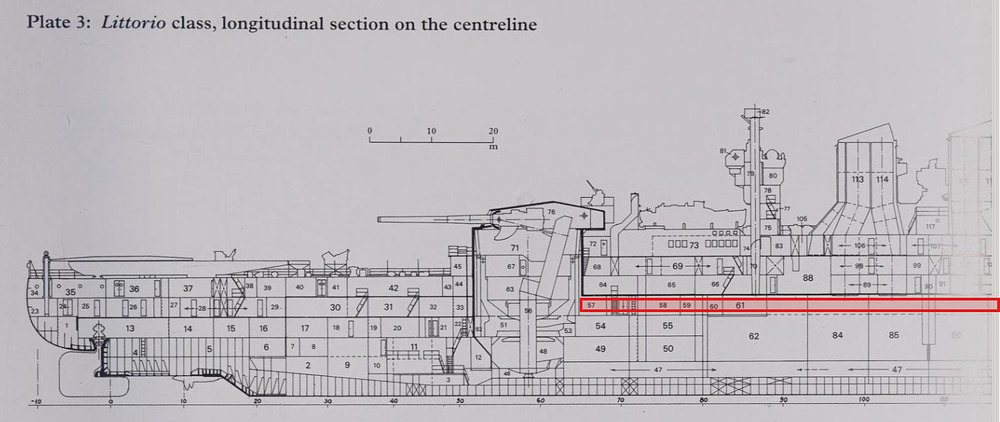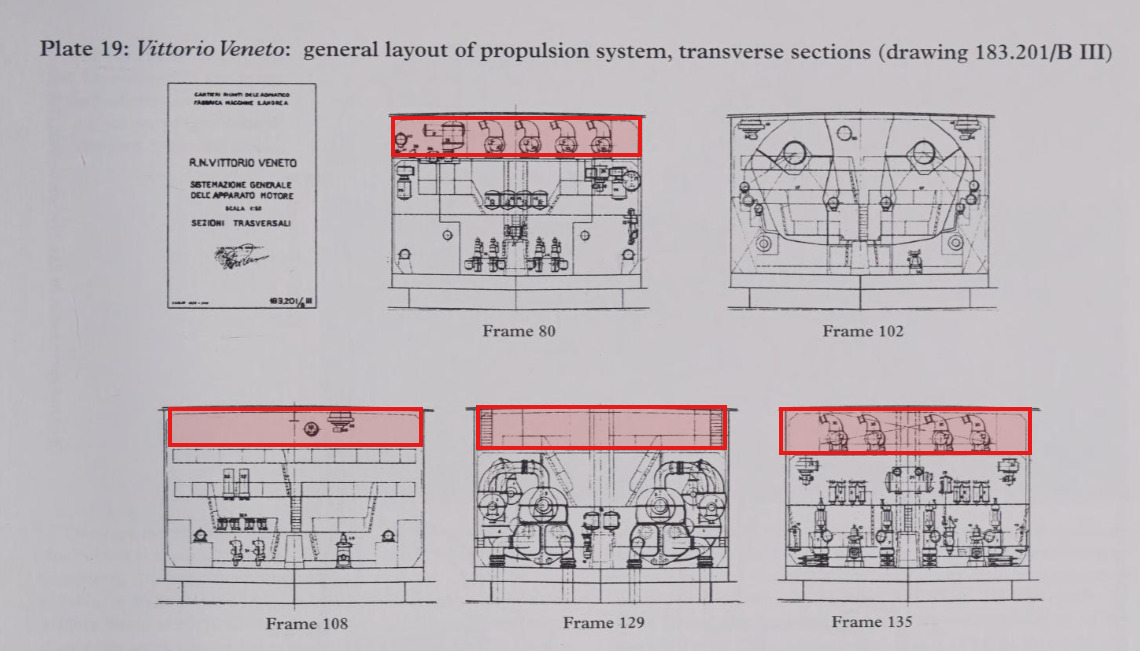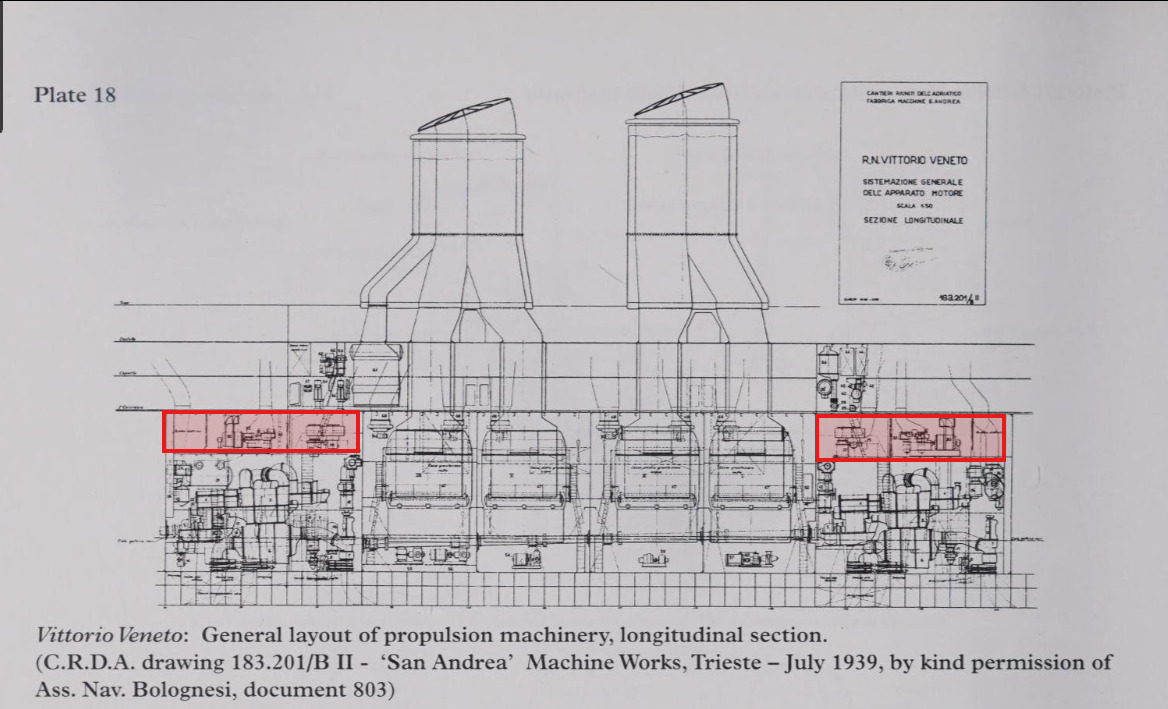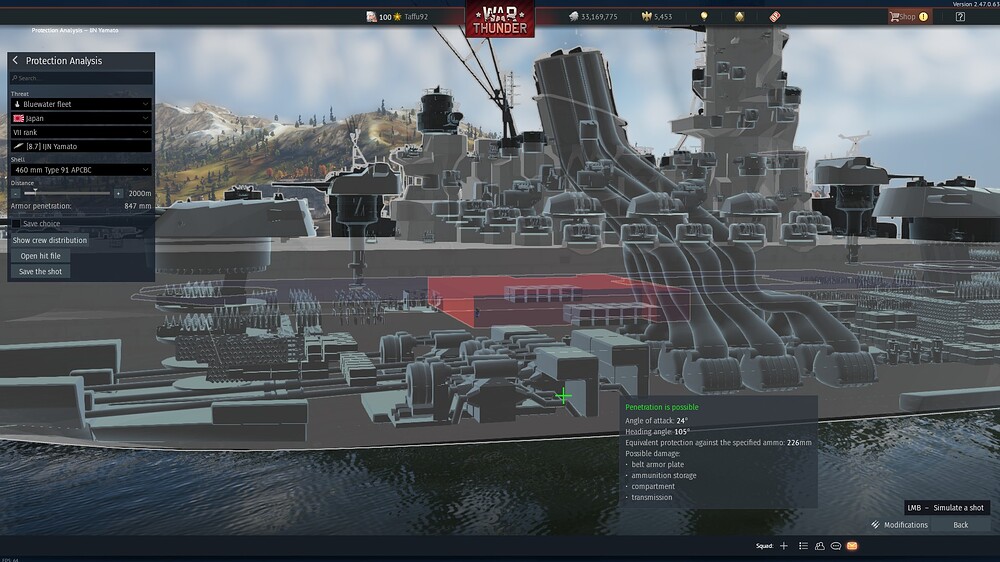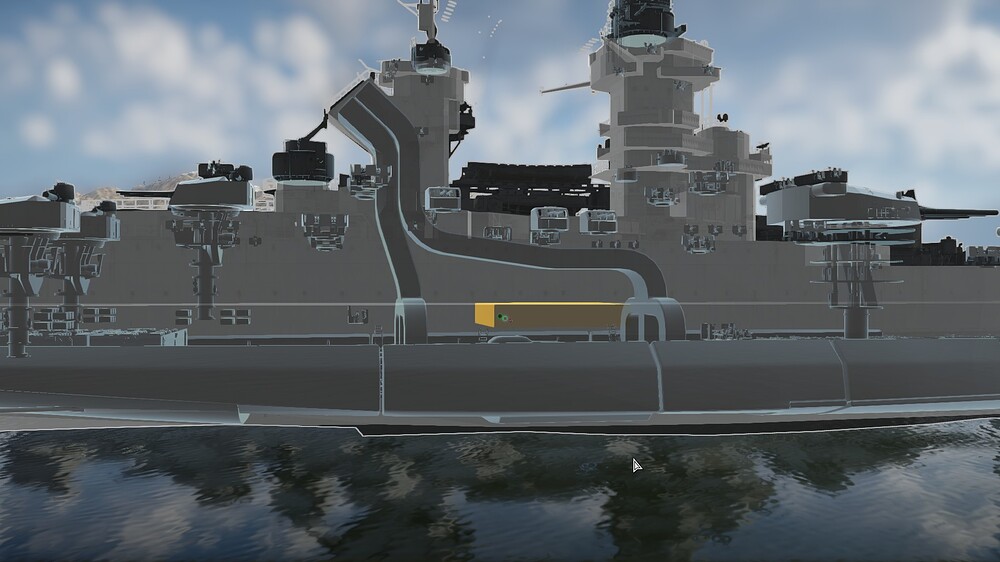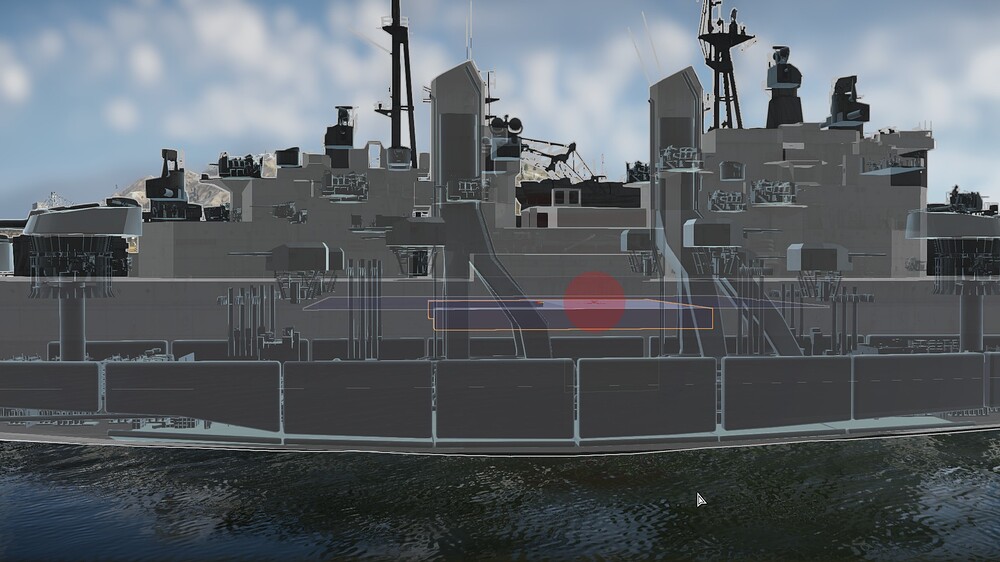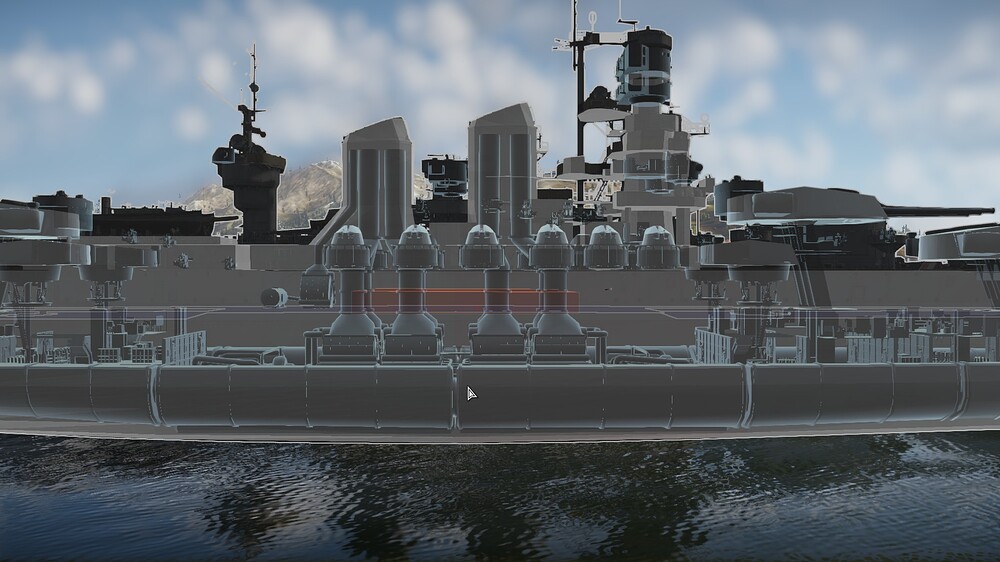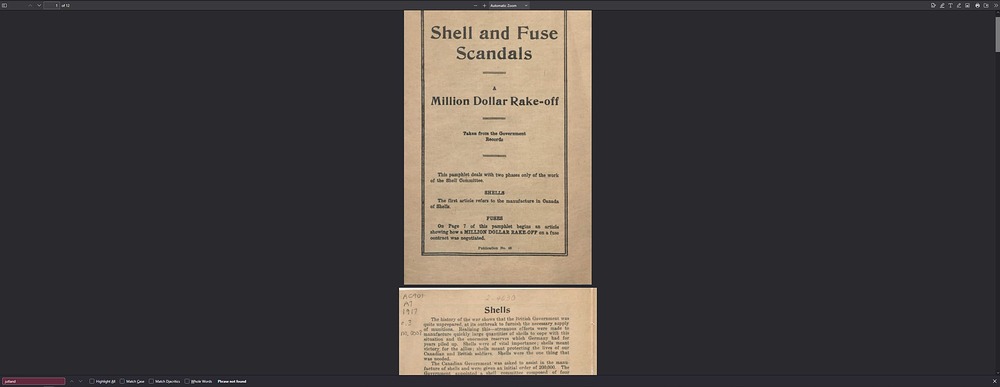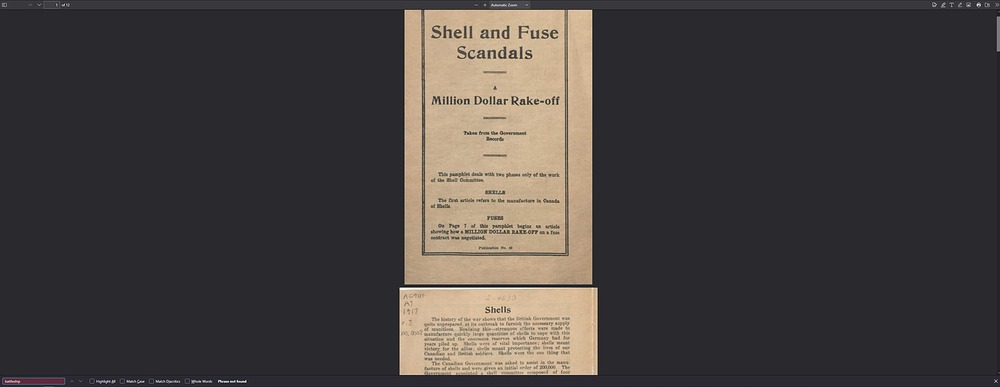Ingame the ship would be mostly out of action as well (after 10+ main cal hits), but there’s the repair funktion to fix everything in a few secs. Its a game.
In what reality? In game you could receive hundreds of them in a long match and still survive.
The dimensions of flooding compartment of hull is not only relevant to damage model but also the physical behaviour of the ship. Changing that will require major rework on physical parameters such as the centre of gravity, flooding parameters etc for every ship. This would take too much resource so developer do not have plan to change that.
You can think whatever you like without solid proof. If you want to read the source, you can order digital copies from the National Archives website, or like me traveling to Kew and read the documents in person and take photographs. I do not have the liability to publish these documents in full which I have invested huge amount of time in travelling, reading and photo shooting. I gave the courtesy of showing a few pages because they are the most relevant to the very question you have asked:
Sure those studies told us that 30 mm bulkhead or deck should protect from 1 ton AP round exploding on the floor
The famous Baden trial report is from CB1640 1922~23, Jutland ship damage reports and live ammunition testing are from the Projectile Committee final report 1917 and Shell Committee interim report 1917. All catalogued in UK National Archives online.
The Baden trial was done with post WW1 shells, which you can even see in the pages where shells were filled with 70/30 Shellite. WW1 AP shells were filled with Lyddite. And I don’t see why experimental shells are irrelevant. Do they follow different physical rules from another universe?
If you still have disagreement, or are doubtful about the documents I posted, get a copy and read by yourself, I have already give you the title of documents which you can find in NA catalogue. There’s no point to discuss when you can only make assumptions.
For the way naval matches work, or even more what the win conditions are ships need to be somewhat survivable. If most ships would be completely out of action with 10 hits of main caliber guns (beyond repair in a somewhat doable time) i want to see the madman that is going to push one of the objectives right in the middle of the map, even closer to the enemy spawn or sit inside one of the giant circle maps on the cap. No one could and would go for the objectives, which is already a big risk for the ships that arent exactly the most survivable or dont have the best armor. Everone would just sit in the back trying not to make him/herself the main and closest target for all enemy players spawning right in front of you.
Take Japanese Port for example, its an absolute suicide mission to get from the spawns anywhere close to any of the caps. Doing that in the Yamato atm is asking for the whole enemy team to shoot you unless maybe your whole team sails out together. If your team (or most of them) stays in spawn, which is usually the case (can’t blame them, who wants to be shot by 5 players at once) youll show up as one of 3 ships of which 2 of them are bots and youre dead before you even made it 1 km out of spawn. While a couple of pt boats cap 2 points and win the match. You’d need to be in a soyuz or an iowa focussing mainly on dodging enemy shells to even have a slight chance of getting there. Anything else is just gambling. and your odds are 0
Could you give us your copy? Is there a Barham damage received in it?
Considering
There were many lessons learned on both the technical and operational sides by the British. The destruction of the battlecruisers was obviously worrying, and Jellicoe and Beatty both blamed inadequate ship design instead of the true culprit. They also discovered that to the point where some German 8” plates had survived hits from 15” shells at much closer ranges than they should have been able to. Improved shells were developed, but did not reach the fleet until April of 1918, the captain of Iron Duke at Jutland, estimated that an additional 6 German ships would have been sunk if these ‘Greenboy’ shells had been available there based on the hits made.
and
One of the great scandals to come out of the Battle of Jutland was the relative ineffectiveness of the British armor-piercing shells. For a variety of reasons, the British had been well behind the other European powers in shell design for at least a decade, and at Jutland, only one of the 17 heavy shells that struck thick German armor penetrated successfully.
The answer is a tangled mix of learning the wrong lessons from war and trials, problems with organizational structure, and the unusual way British procurement took place in the early years of the 20th century.
and
https://community.gaijin.net/issues/p/warthunder/i/28mUU9e0lu1y
https://community.gaijin.net/issues/p/warthunder/i/XteZVGJvsK41
Looks like gaijin is really serious into making Roma unplayable
Bad news…
Some ship has ‘realistic’ hull flooding compartment and having superiority on survival than others seems not good…
I wish every ships would have flooding compartment of Marat/Kommuna/Nevada one day, in the near future.
I think they loopholed you with the second one.
You focused on the compartments but the real problem is that the crew is not in “battle ready” positions like with other ships.
Crew should be manning machinery and such during combat, not strolling around in compartments.
As they don’t know how to code overlapping hitboxes ( see the volumetric hell in GRB ) I suggest you redo the report focusing on the crew position, explaining how they should be linked to the boilers, radio stations, transmissions and ammo modules rather than external compartments.
They did a devblog sometime ago explaining this but I can’t manage to find it.
Right now the crew is litterally on the wrong deck and those colors should be flipped ( as it was IRL)
I wasnt the one that made the reports tho, just looking into the reports to see what the status of the bug reports are
Sorry, didn’t notice.
@LafayеtteGPool, I’ll ping you here.
If you’ll ever read this try rewriting your report focusing on crew placement in a “battle ready” state instead of the compartments, I’ll paste a possible solution just below:
If you’ll ever want to redo the report I suggest starting from this point to avoid possible loopholes.
Hi.
I understand what you are talking about, but there is one catch - the standard for the distribution of the crew across the modules.
For example, there are 20 people in the main guns turret, 70 in the engine rooms, and so on.
Therefore, the excess crew that is not distributed among the modules is allocated into crew compartment.Another problem is the modeling of the module by compartment - even if the boiler takes up less space, in the model it occupies a whole compartment and there is no space left under the armor deck.
Although I can use this space in the engine room.
If we can’t move more crew into the engine room for coding issues splitting the mid ship compartment can be a possible solution as you hinted.
It can solve the bizzarre problem where Roma is, right now, the only new BB with the mid compartment above the main armored deck:
Iowa:
Yamato:
Richelieu:
Vanguard:
Roma:
Basically a random heavy HE shell or a bomb can take out a good chunk of the crew with no difficulty, not really the safest place to be in a combat scenario.
richielau is only slightly worse than bismarck
she gets better pen for a slightly worse reload and roughly same explosive mass and only slightly worse armor with better AA and similar secondarys
so id say richileu ties for best 8.3 maybe even better since you can ammo it as easy as bismarck with elavator fires not to mention armor belt is thicker but turtle back is thinner so almost same armor wise not to mention you can use all guns while angled giving you a above average salvo from front which is ideal
not to mention that the fire nerf is artficial as powder rooms where subdivied and where flooded when not in use so for example turret dora on has fore and after comparment for powder charges one flooded at a time while other was in use for saftey which gaijin hasnt modeled and they could be unflooded for use within 30-60seconds depeding on rooms
Richelieu
Spoiler
Primary armament
2 × Turret — 4 × 380 mm/45 model 1935 gun
Ammunition832 rounds
Reloadbasic crew → aces
44.5 → 34.2 s
Vertical guidance-5 / 35°
Turret Rotation Speed
Horizontal5 °/s
Vertical5.5 °/s
Available ammunition
Ammunition Type Armor penetration (mm) at a distance:
1000 m 2500 m 5000 m 7500 m 10000 m 15000 m
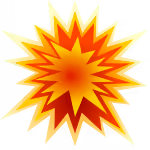
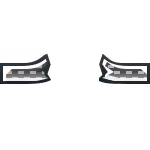

380 mm OEA Mle 1949 HE HE 112 107 100 93 86 75

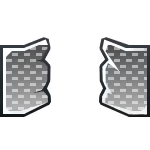

380 mm OPF Mle 1936 APCBC APCBC 712 681 633 589 548 474

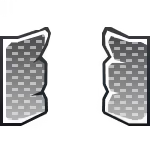

380 mm OPF Mle 1943 APCBC APCBC 741 709 659 613 571 494
Secondary armament
3 × Turret — 3 × 152 mm/55 model 1930 gun
Ammunition3,600 rounds
Reloadbasic crew → aces
10.4 → 8 s
Vertical guidance-10 / 85°
Turret Rotation Speed
Horizontal12 °/s
Vertical8 °/s
Available ammunition
Ammunition Type Armor penetration (mm) at a distance:
1000 m 2500 m 5000 m 7500 m 10000 m 15000 m



152 mm OEA Mle 1937 HE HE 42 42 42 42 42 42
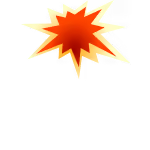
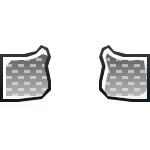
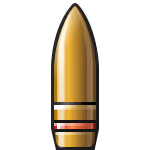
152 mm OPF Mle 1937 SAPBC SAPBC 138 120 93 70 53 39



152 mm OPF Mle 1943 APCBC APCBC 312 277 226 182 145 97


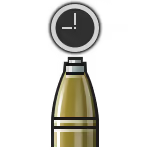
152 mm OEA Mle 1936 HE-TF HE-TF 42 42 42 42 42 42
Anti-aircraft armament
6 × Turret — 2 × 100 mm/45 model 1930 gun
Ammunition4,800 rounds
Reloadbasic crew → aces
4.9 → 3.7 s
Vertical guidance-10 / 80°
Turret Rotation Speed
Horizontal10 °/s
Vertical5 °/s
Available ammunition
Ammunition Type Armor penetration (mm) at a distance:
100 m 1000 m 2000 m 3000 m 4000 m 5000 m



100 mm OEA Mle 1928 HE-TF HE-TF 20 17 16 16 16 16
14 × Turret — 4 × 40 mm Bofors L/60 Mark 2 gun
Ammunition112,000 rounds
Belt capacity4 rounds
Reloadbasic crew → aces
0.5 → 0.4 s
Fire rate156 shots/min
Vertical guidance-15 / 85°
Turret Rotation Speed
Horizontal35 °/s
Vertical28 °/s
Available belts
50 × Turret — 20 mm/70 Oerlikon Mk.II autocannon
Ammunition90,000 rounds
Belt capacity60 rounds
Reloadbasic crew → aces
5.2 → 4 s
Fire rate450 shots/min
Vertical guidance-3 / 65°
Turret Rotation Speed
Horizontal75 °/s
Vertical65 °/s
Available belts
Economy
Repair costBasic → Reference
AB33,325 → 41,856
RB37,198 → 46,721
Crew training330,000
Experts1,150,000
Aces2,800
Research Aces1,080,000
Reward multiplierAB / RB
450 / 600 %
232 %
Total cost of modifications323,000
516,000
Talisman cost2,800
Bismarck
Spoiler
Scout plane
Armour
Citadel220 / 320 / 100 mm
Main fire tower360 / 220 / 320 mm
Hull25 mm (steel)
Superstructure16 mm (steel)
Number of sections9
Displacement50,900 t
Crew2,221 persons
Max speed
Forward57 km/h
Backward20 km/h
Primary armament
4 × Turret — 2 × 38 cm/52 SK C/34 cannon
Ammunition1,008 rounds
Reloadbasic crew → aces
29.5 → 22.7 s
Vertical guidance-5 / 30°
Turret Rotation Speed
Horizontal6 °/s
Vertical5.4 °/s
Available ammunition
Ammunition Type Armor penetration (mm) at a distance:
1000 m 2500 m 5000 m 7500 m 10000 m 15000 m



380 mm Spgr. L/4.6 Kz HE 96 92 84 77 73 73



380 mm Psgr. L/4.4 APCBC 701 666 613 563 517 435


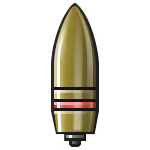
380 mm Spgr. L/4.5 Bdz HE 524 498 458 421 387 325



380 mm Spgr. L/4,6 Zt.Z HE-TF HE-TF 96 90 81 73 73 73
Secondary armament
6 × Turret — 2 × 15 cm/55 SK C/28 cannon
Ammunition2,400 rounds
Reloadbasic crew → aces
9.8 → 7.5 s
Vertical guidance-10 / 70°
Turret Rotation Speed
Horizontal8 °/s
Vertical9 °/s
Available ammunition
Ammunition Type Armor penetration (mm) at a distance:
1000 m 2500 m 5000 m 7500 m 10000 m 15000 m



15 cm Spgr. L/4.5 Kz (m.Hb) HE 37 37 37 37 37 37



15 cm Pzgr. L/3.7 (m.Hb) APCBC 260 228 181 141 109 72



15 cm Spgr. L/4.4 Bdz (m.Hb) SAPBC 124 106 80 60 43 35
Anti-aircraft armament
8 × Turret — 2 × 10.5 cm/60 SK C/33 AA cannon
Ammunition6,720 rounds
Reloadbasic crew → aces
4.7 → 3.6 s
Vertical guidance-8 / 80°
Turret Rotation Speed
Horizontal10 °/s
Vertical8 °/s
Available ammunition
Ammunition Type Armor penetration (mm) at a distance:
1000 m 2500 m 5000 m 7500 m 10000 m 15000 m



10.5 cm Sprgr. L/4.4 Zt.Z HE-TF 21 20 20 20 20 20
8 × Turret — 2 × 3.7 cm SK C/30 mounting
Ammunition32,000 rounds
Reloadbasic crew → aces
2.6 → 2 s
Vertical guidance-8 / 85°
Turret Rotation Speed
Horizontal19.6 °/s
Vertical15 °/s
Available ammunition
Ammunition Type Armor penetration (mm) at a distance:
10 m 100 m 500 m 1000 m 1500 m 2000 m



37 mm Spgr L/4.1 Lh 37 HE 7 7 6 5 5 5
2 × Turret — 4 × 2 cm/65 C/38 automatic cannon
Ammunition16,000 rounds
Belt capacity40 rounds
Reloadbasic crew → aces
5.2 → 4 s
Fire rate480 shots/min
Vertical guidance-10 / 80°
Turret Rotation Speed
Horizontal35 °/s
Vertical25 °/s
Available belts
12 × Turret — 2 cm/65 C/38 automatic cannon
Ammunition24,000 rounds
Belt capacity40 rounds
Reloadbasic crew → aces
5.2 → 4 s
Fire rate480 shots/min
Vertical guidance-10 / 60°
Turret Rotation Speed
Horizontal65 °/s
Vertical55 °/s
Available belts
Economy
Repair costBasic → Reference
AB32,070 → 41,755
RB35,797 → 46,608
Crew training330,000
Experts1,150,000
Aces2,800
Research Aces1,080,000
Reward multiplierAB / RB
450 / 600 %
232 %
Total cost of modifications320,000
508,000
Talisman cost2,800
Research order:
heres side by side comp from gaijin as my evidence
Link leads to nothing.
The Canadian shell scandal of WW1 had nothing to do with naval shells: that was about the politics of early war industrialization and concerned land artillery and fuzes. Your citation in this post above as a result contains NONE of the quotes you’ve given, which you’ve apparently taken from some secondary source without any attribution.
So you picked a couple quotes from randoes off the internet and tried to back them up with a basically fake link, assuming no one here knows anything about Canadian military procurement scandals (wrong!) and could spot the lie on sight. That’s the exact OPPOSITE of what @HK_Reporter does for this community every single day.
Sure sure, and that why after scandal new shells were produced in half a year.
The canadian article you linked doesn’t mention
Jutland
naval
or battleship
Once
The other quote you posted comes from a blog post Naval Gazing Main/Shells at Jutland
which doesnt cite its sources for the claims made in the article
According to Robert K. Massie in his book “Castles of Steel; Britain, Germany and the winning of the great war at sea”, the british first learned about their shells breaking up and exploding upon impact with armour from a swedish naval attaché during a lunch party aboard HMS Lion in August 1916.
This spiked the development of the green boy shells which would not arrive in numbers until April 1918.
(Chapter 34: Jutland: Aftermath; pages 667-668)
